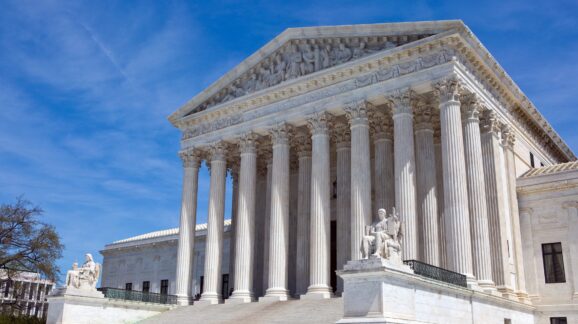Inflation Reduction Act and West Virginia v. EPA: Legislative History Refutes Sen. Carper’s Spin

Photo Credit: Getty
“And whatever interpretive force one attaches to legislative history, the Court normally gives little weight to statements, such as those of the individual legislators, made after the bill in question has become law.” Barber v. Thomas, 560 U.S. 474, 486 (2010).
“The Court has previously found the post-enactment elucidation of the meaning of a statute to be of little relevance in determining the intent of the legislature contemporaneous to the passage of the statute.” Edwards v. Aguillard, 482 U.S. 578, 596 n.19 (1987).
Ignoring the Supreme Court’s disparagement of attempts to make legislative history after the fact, The New York Times on August 22 promoted the post-enactment spin of Sen. Tom Carper (D-DE), Harvard law professor Jody Freeman, and other unnamed “experts” about the misnamed Inflation Reduction Act (IRA). Based on interviews with those worthies, the Times called the IRA a “game changer.”
How so? Supposedly, the IRA undercuts the precedential force of the Supreme Court’s ruling in West Virginia v. Environmental Protection Agency, which vacated the Obama administration’s so-called Clean Power Plan (CPP)—a regulatory framework compelling utilities to shift electric power generation from fossil-fuel facilities to renewables.
The Court spotlighted the “major questions doctrine,” which counsels judicial skepticism when an agency purports to find, in a long-extant statute, an unheralded power to make big, costly, or controversial changes in a significant portion of the U.S. economy without a “clear statement” of congressional authority. The Court ruled that Section 111 of the Clean Air Act (CAA), the CPP’s putative statutory basis, contains no “clear statement” authorizing the Environmental Protection Agency (EPA) to reallocate production and market share in an entire industry or sector of the U.S. economy.
Carper et al. claim the IRA supplies the missing clear statement by directing the EPA, in provisions that amend the CAA, to reduce greenhouse gas (GHG) emissions as “air pollutants.”
Such reasoning is a mess, as I explain previously on CEI’s blog and Real Clear Energy. In brief:
- West Virginia did not review or revise the Court’s position in Massachusetts v. EPA (2007), American Electric Power v. Connecticut (2011), or Utility Air Regulatory Group v. EPA (2014) that GHGs are “air pollutants” subject to regulation under the CAA.
- West Virginia vacated the CPP not because CAA § 111 does not mention GHGs or carbon dioxide (CO2) but because there is no clear statement authorizing the EPA to herd States and utilities into GHG cap-and-trade programs—policies Congress repeatedly debated and declined to approve in the 2000s.
- IRA provisions that amend the CAA authorize new spending, tax credits, or methane taxes, not new or expanded regulatory powers.
As noted in my Real Clear Energy piece, Professor Freeman argued in a New York Times op-ed of August 11 that the IRA might “strengthen the basis” for EPA regulation of GHGs by helping lower the cost of carbon capture technology. CAA § 111 “requires the agency to consider the availability of technology and its cost” when setting emission performance standards, she explained, so the IRA might make the EPA more likely to set emission standards based on that technology.
Far from disputing the Court’s ruling in West Virginia, Freeman’s op-ed tacitly endorsed the legal theory of the victorious plaintiffs, who argued that the CPP performance standards were unlawful because they were unattainable, forcing fossil-fuel generators to either curb output, subsidize renewables, or simply shut down.
In her subsequent interview with the Times, however, Freeman, like Carper, opined that the IRA “cements the EPA’s authority” to regulate GHGs, creating a “powerful disincentive” to future litigation based on the major-questions doctrine.
What I had not realized until yesterday is that the post-hoc legislative history Carper et al. seek to disseminate is not only false but also conflicts with the actual legislative history Carper made on August 6, 2022, when he debated the IRA on the Senate floor.
Only once in the long hours of the August 6 Vote-A-Rama floor debate, in a two-minute exchange between Sens. Shelley Capito (R-WV) and Carper, is there any discussion of the IRA’s potential impact on West Virginia v. EPA. The exchange occurs on page 4178 of the Congressional Record.
Sen. Capito offered an amendment to strike IRA Sec. 60105(g), which would appropriate $45 million for the EPA “to carry out” CAA § 111 and eight other sections “with respect to greenhouse gases.”

Capito warned that Sec. 60105(g) would create talking points for EPA lawyers and environmental groups “when they try and convince courts to uphold future overreaching climate regulations,” such as the CPP. Sen. Carper countered that Section 60105(g) “would fund the EPA to use its existing narrow Clean Air Act authorities to address greenhouse gas emissions.” [Emphasis added]
In short, before passage, Sen. Carper effectively denied Sec. 60105(g) would reverse or undercut West Virginia. Rather, the IRA language would fund the EPA’s use of “existing narrow” CAA authorities.
Although Capito’s amendment lost on a 50-50 vote, Section 60105(g) was later deleted on a point of order. That means the final IRA does not even contain a section authorizing the EPA to use “existing narrow” regulatory authorities with respect to greenhouse gases. And, as noted above, all the CAA amendments in the IRA are fiscal policy provisions, which as such cannot create or expand any CAA regulatory authority.
Yet in the August 22 New York Times article, Carper, other Democrats, and “legal experts” describe the IRA’s GHG- and CAA-language as “fundamental changes” and “amendments” authorizing the EPA to do that which West Virginia prohibits. Their spin and innuendo are false, and they are too clever not to know it.